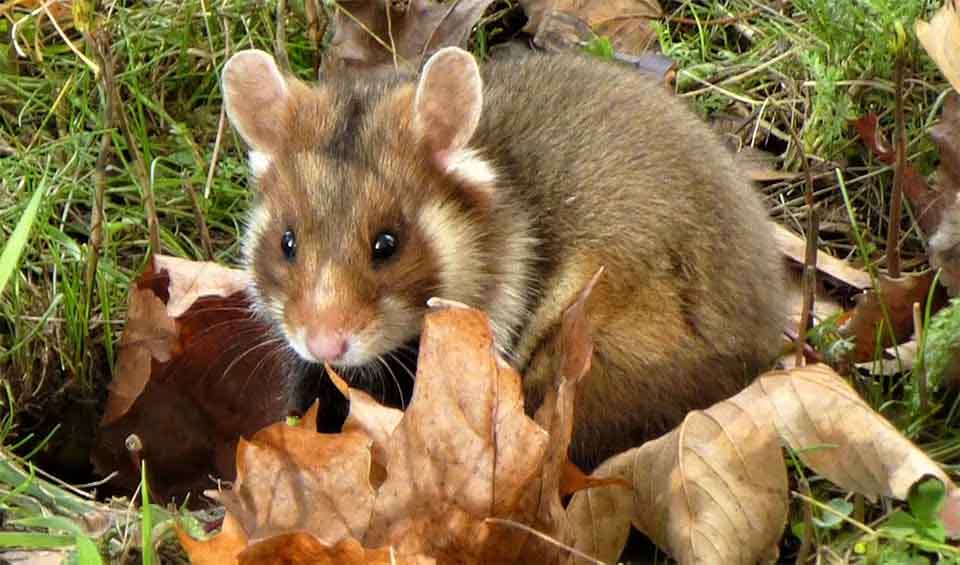A fascinating and somewhat misunderstood creature native to a wide range of Europe and parts of Asia. This species is significantly larger than the more familiar pet hamsters, typically reaching lengths of 20 to 35 cm (8 to 14 inches). It boasts a robust body, short tail, large cheek pouches for carrying food, and a coat that varies seasonally from a dark brown or black with a white belly in summer to a more muted gray in winter.
One of the most striking features of the European hamster is its solitary and territorial nature. Unlike many other small mammals that may exhibit social behaviors, European hamsters prefer to live alone and can become quite aggressive if their space is invaded. This trait is especially prominent during the breeding season, which usually runs from April to August. During this time, females become very protective of their burrows and can aggressively fend off males after mating to prevent any threat to their upcoming litter.
The European hamster is known for its remarkable burrowing ability. It creates complex underground networks that serve various purposes such as storage for food, nesting for offspring, and protection from predators and harsh weather. These burrows can be quite extensive, with multiple chambers and exits, and are crucial for the hamster’s survival during winter. During the colder months, the European hamster enters a state of hibernation, slowing its metabolism dramatically to conserve energy until spring.
Diet-wise, the European hamster is omnivorous but leans heavily on a plant-based diet. It eats a variety of grains, roots, and green parts of plants, as well as insects and other small animals when available. This varied diet is complemented by the hamster’s ability to store vast amounts of food in its burrow, which helps it survive during times when food is scarce.
Distribution
 Austria
Austria Belarus
Belarus Belgium
Belgium Bosnia And Herz.
Bosnia And Herz. Bulgaria
Bulgaria China
China Croatia
Croatia Czechia
Czechia France
France Georgia
Georgia Germany
Germany Hungary
Hungary Kazakhstan
Kazakhstan Moldova
Moldova Netherlands
Netherlands Poland
Poland Romania
Romania Russia
Russia Serbia
Serbia Slovakia
Slovakia Slovenia
Slovenia Switzerland
Switzerland Ukraine
UkraineAnything we've missed?
Help us improve this page by suggesting edits. Glory never dies!
Suggest an editGet to know me
Terrestrial / Aquatic
Altricial / Precocial
Polygamous / Monogamous
Dimorphic (size) / Monomorphic
Active: Diurnal / Nocturnal
Social behavior: Solitary / Pack / Herd
Diet: Carnivore / Herbivore / Omnivore / Piscivorous / Insectivore
Migratory: Yes / No
Domesticated: Yes / No
Dangerous: Yes / No




